The history of the Chinese missile defense system in the 1960-1970 years
- “Project 640-1” - the creation of interceptor missiles;
- “Project 640-2” - anti-ballistic artillery guns;
- “Project 640-3” - laser weapon;
- “640-4 Project” - early warning radars.
- “640-5 Project” - detection of warheads when they enter the atmosphere using optoelectronic systems and the development of satellites that fix the start of ballistic missiles.
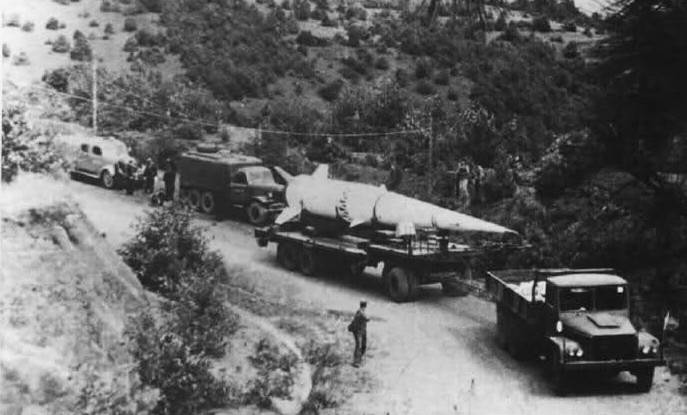
Development of missile defense in China
The first Chinese anti-missile system was the HQ-3, created on the basis of the anti-aircraft missile HQ-1, which in turn was a Chinese copy of the Soviet SA-75M air defense system. The missile, designed in China to combat ballistic targets, did not seem to differ much from the B-750 missiles used in the SA-75M, but were longer and heavier. However, it soon became clear that the anti-aircraft missile, designed to combat aerodynamic targets at medium and high altitudes, is not suitable for defeating warheads flying at hypersonic speed. The launch characteristics of the anti-missile did not meet the necessary requirements, and the manual tracking of the target did not provide the required accuracy of guidance. In connection with the use of a number of technical solutions of the HQ-1 air defense system, it was decided to develop a new HQ-4 missile defense system.
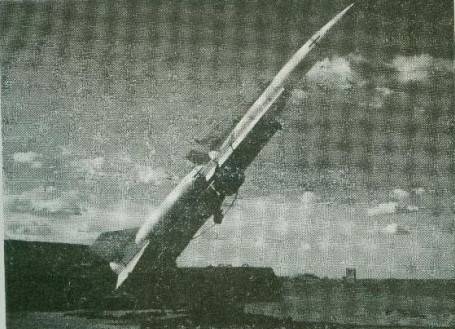
Chinese sources say that the weight of the HQ-4 missile system was over 3 tons, the firing range was up to 70 km, and the minimum was 5 km. Reach in height - more than 30 km. The guidance system is combined; in the initial section, the radio command method was used; in the final section, semi-active radar homing was used. For this, a target illumination radar was introduced into the guidance station. The defeat of a ballistic missile was to be carried out by a high-explosive fragmentation warhead weighing more than 100 kg, with a non-contact radio fuse. The missile was dispersed at the initial stage by a solid-fuel engine, after which the second stage was launched, which operated on heptyl and nitrogen tetroxide. Missiles were assembled at the Shanghai Mechanical Plant.
During tests in 1966, the interceptor missile was able to disperse to 4М, however, control at this speed was extremely difficult. The process of fine-tuning the missile was very difficult. Many problems arose with refueling with poisonous heptyl, the leaks of which led to serious consequences. Nevertheless, the HQ-4 complex was tested by firing on a real ballistic missile R-2. Apparently, the results of practical firing turned out to be unsatisfactory, and at the beginning of the 1970's the process of refining the HQ-4 missile defense system was stopped.
After the failure with HQ-4, the PRC decided to create from scratch a new missile defense system HQ-81. Externally, the interceptor missile, known as the FJ-1, resembled the American two-stage solid-propellant rocket Sprint. But unlike the American product, the rocket, created by Chinese experts, in the first version had two liquid stages. Subsequently, the first stage was transferred to solid fuel.
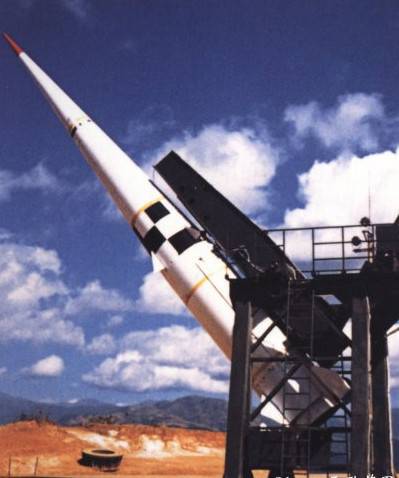
The final FJ-1 modification submitted for testing had a length of 14 m and a starting weight of 9,8 t. Launch took place from an inclined launcher at an angle of 30-60 °. The operating time of the main engine was 20 s, the range of destruction in range was about 50 km, the interception height was 15-20 km.
Throwing trials of prototypes began in the 1966 year. The development of the Type 715 anti-missile and fire control radars was greatly inhibited by the Cultural Revolution, and managed to launch the FJ-1 guided missiles at the anti-ballistic firing range in the vicinity of Kunming in 1972. The first tests ended unsuccessfully, two rockets exploded after the start of the operation of the main engine. We managed to achieve reliable operation of the engines and control system by the 1978 year.
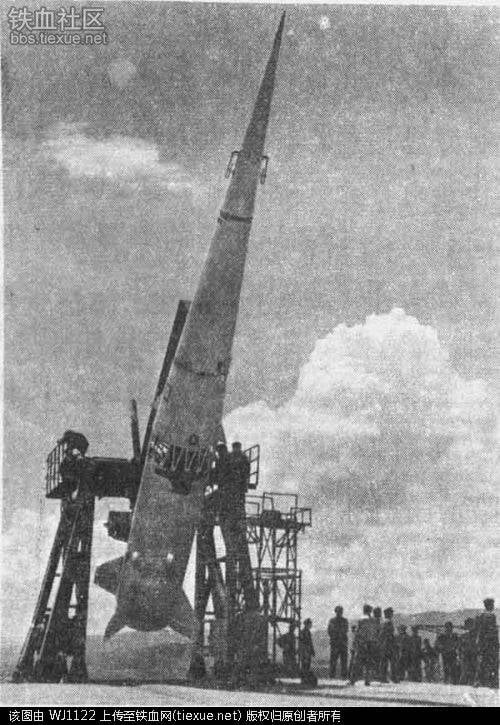
During the control firing carried out in August-September of 1979, a telemetric missile was able to conditionally hit the warhead of a medium-range ballistic missile DF-3, after which it was decided to deploy 24 anti-aircraft missiles FJ-1 north of Beijing. However, already in the 1980 year, work on the practical implementation of the China missile defense program was stopped. The Chinese leadership concluded that the national missile defense system would cost the country too much, and its effectiveness would be dubious. By that time, ballistic missiles carrying several individual warheads and numerous false targets were created and adopted in the USSR and the USA.
In parallel with the development of the FJ-1 from 1970, the FJ-2 interceptor rocket was created. It was also intended for close interception, and had to fight with attacking warheads at ranges up to 50 km, in the altitude range of 20-30 km. In 1972, 6 prototypes were tested; 5 launches were recognized as successful. But due to the fact that the FJ-2 missile was competing with the FJ-1, which entered the stage of acceptance tests, in the 1973 year the work on the FJ-2 was curtailed.
For the long-range interception of warheads of ballistic missiles, the FJ-3 was intended. The development of this anti-missile launched in the middle of the 1971 year. Tests of the long-range three-stage solid-fuel mine-based interceptor began in the 1974 year. To increase the likelihood of intercepting a target in near space, the simultaneous guidance of two missile defense systems on one target was provided. The missile defense was to be carried out by the S-7 on-board computer; later it was used on the DF-5 ICBM. After the death of Mao Zedong, the FJ-3 development program was discontinued in 1977.
Work on the creation of anti-ballistic artillery guns
In addition to interceptor missiles, it was proposed to use large-caliber anti-aircraft guns to provide missile defense for local areas in the PRC. Research on this topic was carried out as part of the 640-2 Project by the Xi'an Electromechanical Institute.
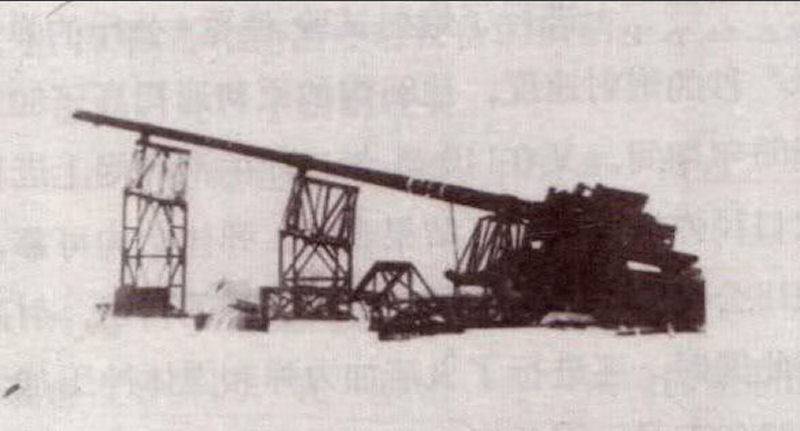
Originally designed 140-mm smoothbore gun, capable of sending 18 kg projectile with an initial speed of more than 1600 m / s to a height of 74 km, with a maximum firing range of more than 130 km. In the tests that took place from 1966 to 1968 year, the experimental gun showed encouraging results, but the barrel life was very low. Although the height reach of the 140-mm anti-ballistic missile was quite acceptable, when using a projectile without a “special” warhead, even when paired with a fire control radar and ballistic computer, the probability of hitting a ballistic missile warhead tended to zero. At the same time, it is worth recalling that the minimum caliber of serially produced "atomic artillery" shells is 152-155 mm. Calculations showed that the 140-mm anti-aircraft guns in a combat situation will be able to produce only one shot, and even when deploying dozens of guns in one area and introducing conventional ammunition with a radio fuse of acceptable efficiency in this caliber, it will not be possible to achieve.
In connection with these circumstances, in the 1970 year, the 420-mm smoothbore gun, which is referred to as the “Pioneer” in Chinese sources, was tested. The weight of the anti-missile gun with a barrel length of 26 m was 155 t. The mass of the projectile is 160 kg, the initial velocity is more than 900 m / s.
According to information published by Global Security, at test firing the gun fired with unguided shells. To solve the problem of extremely low probability of hitting the target, it was supposed to use a projectile in a "special design", or an active-reactive fragmentation projectile with radio command guidance.
When implementing the first option, the developers were faced with objections from the command of the Second Artillery Corps, which experienced a shortage of nuclear warheads. In addition, the explosion of even a relatively low-power nuclear weapon at an altitude of about 20 km above the object to be covered could have extremely unpleasant consequences. The creation of an adjustable projectile was hampered by the imperfection of the radioelement base produced in the PRC, and the overloaded institutes of Academy No. 2 with other topics.
Tests have shown that the electronic filling of a projectile is capable of withstanding acceleration with an overload of approximately 3000 G. Using special dampers and epoxy casting in the manufacture of electronic circuit boards raises this figure to 5000 G. Considering that the magnitude of the overload when fired from an 420-mm gun " Pioneer "exceeded this indicator by about two times, it was required to create a" soft "artillery shot and guided artillery shell with a jet engine. By the end of the 1970's, it became clear that the missile defense weapons were a dead end and the topic was finally closed in the 1980 year. A by-product of field experiments was the creation of parachute rescue systems, which, without prejudice to measuring equipment, returned projectiles with electronic filling to the ground. In the future, developments in the rescue systems of experimental guided missiles were used to create the returned capsules of spacecraft.
Western sources say that the technical solutions implemented in anti-missile cannons were useful in creating a large-caliber artillery gun, which in its design resembles the Iraqi Babylon super-gun. In 2013, two large-caliber guns were noticed at a range located northwest of the city of Baotou, in the region of Inner Mongolia, which, according to some experts, can be used to launch small-sized satellites in low-orbit orbits and to test artillery shells at high speeds.
Laser Missile Defense
When developing anti-ballistic weapons, Chinese experts did not ignore combat lasers. The Shanghai Institute of Optics and Precision Mechanics was appointed the organization responsible for this area. Here, work was carried out to create a compact accelerator of free particles, which could be used to hit targets in space.
By the end of the 1970's, the greatest progress was achieved in the development of the SG-1 chemical oxygen-iodine laser. Its characteristics made it possible to cause fatal damage to the warhead of a ballistic missile at a relatively short distance, which was mainly associated with the features of the passage of a laser beam in the atmosphere.
As in other countries, China was considering the option of using a disposable nuclear-pumped X-ray laser for missile defense. However, to create high radiation energies, a nuclear explosion with a power of about 200 ct is needed. It was supposed to use charges placed in the rock mass, but in the event of an explosion, the release of a radioactive cloud was inevitable. As a result, the option of using a ground-based X-ray laser was rejected.
Development of artificial Earth satellites as part of a missile defense program
To detect the launches of ballistic missiles in China in the 1970-e years, in addition to over-the-horizon radars, an artificial satellite was designed with equipment that fixes the start of ballistic missiles. Along with the development of early detection satellites, work was underway to create actively maneuvering spacecraft capable of destroying enemy satellites and warheads of ICBMs and IFRS in a direct collision.
In October 1969, a design team was formed at the Steam Turbine Plant in Shanghai, which began designing the first Chinese reconnaissance satellite CK-1 (Chang-Kong Yi-hao No.1). The electronic stuffing for the satellite was to be manufactured by the Shanghai Electrotechnical Plant. Since they could not quickly create an effective optoelectronic detection system for the launch rocket torch in China, the developers equipped the spacecraft with reconnaissance radio-electronic equipment. It was envisaged that in peacetime a reconnaissance satellite would intercept Soviet VHF radio networks, messages transmitted via radio relay communication lines and monitor the activity of radiation from ground-based air defense systems. The preparation for the launch of ballistic missiles and their launch was supposed to be detected by specific radio exchange and by fixing telemetric signals.
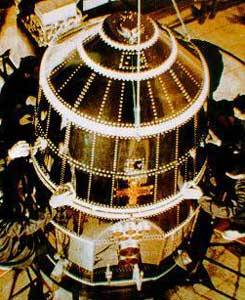
Reconnaissance satellites were to be launched into near-Earth orbit using the FB-1 launch vehicle (Feng Bao-1), which was created on the basis of the first Chinese ICBM DF-5. All launches were carried out from the Jiuquan cosmodrome in Gansu province.
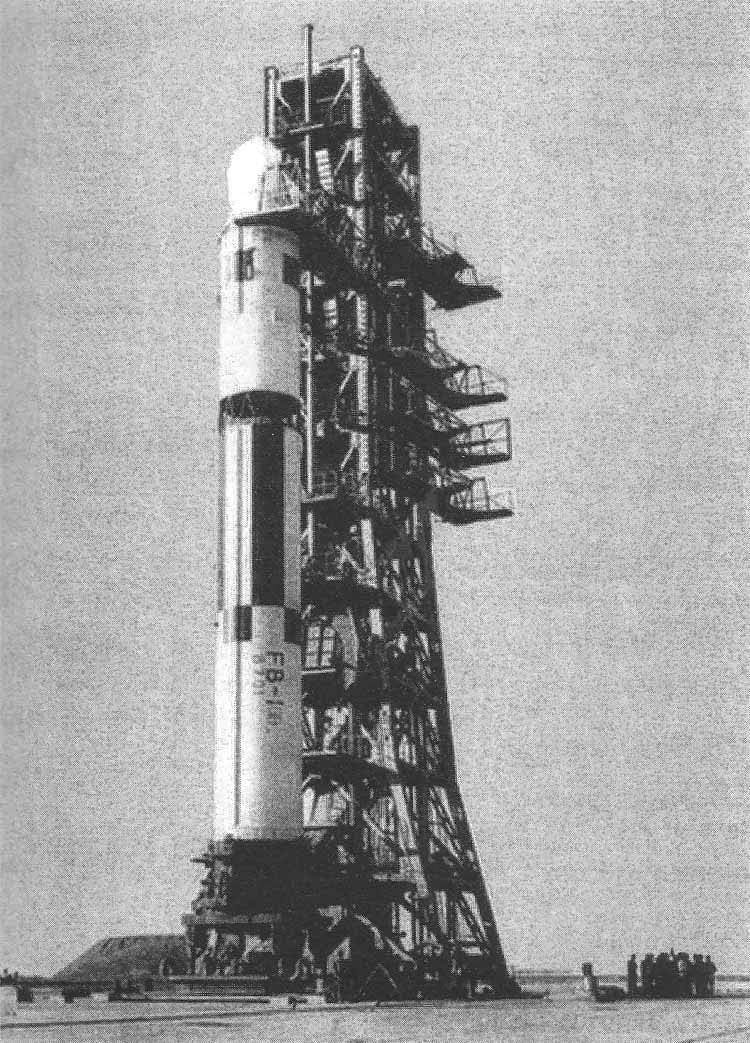
In total, from 18 September 1973 year to 10 November 1976 year, 6 satellites of the SK-1 series were launched. The first two and the last start were unsuccessful. The duration of the Chinese reconnaissance satellites in low orbits was 50, 42 and 817 days.
Although there is no information in open sources on how successful the missions of the Chinese reconnaissance satellites of the SK-1 series turned out to be, judging by the fact that further emphasis was placed on devices that photograph the territory of a potential enemy, the costs did not justify the results. In fact, the first reconnaissance satellites launched in the PRC were in trial operation and were a kind of “test balloon”. If spy satellites in China at the beginning of the 1970's still managed to bring to low Earth orbit, the creation of space interceptors dragged on for another 20 years.
Termination of the "640 Project"
Despite all efforts and the allocation of very significant material and intellectual resources, efforts to create missile defense in China have not led to practical results. In this regard, on June 29, on June 1980, a meeting was held under the chairmanship of the deputy chairman of the CPC Central Committee, Deng Xiaoping, with the participation of high-ranking military and leaders of major defense organizations. Following the meeting, it was decided to curtail work on the "640 Project". An exception was made for combat lasers, SPRN radars and reconnaissance satellites, but the scale of funding has become much more modest. By that time, leading Chinese experts had concluded that it was impossible to build an effective missile defense system on 100%. A certain influence was also exerted by the conclusion between the USSR and the USA in the 1972 year of the Treaty on the Limitation of Anti-Ballistic Missile Defense. The main motive for curtailing in China the program for creating a national missile defense system was the requirement to reduce defense spending and the allocation of basic financial resources to modernize the country's economy and the need to improve the welfare of the population. Nevertheless, as subsequent events showed, the PRC leadership did not abandon the creation of weapons capable of counteracting a missile strike, nor did the work to improve the ground and space-based missile attack early warning equipment continue.
To be continued ...
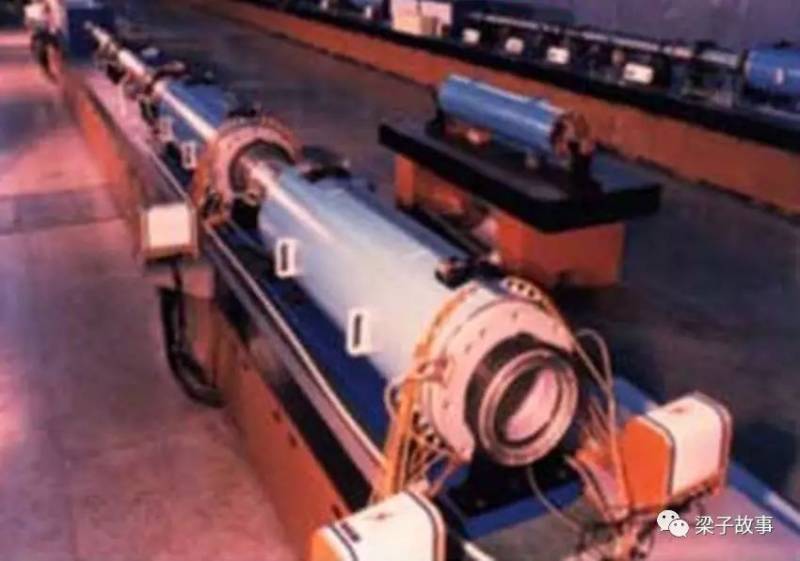
Information